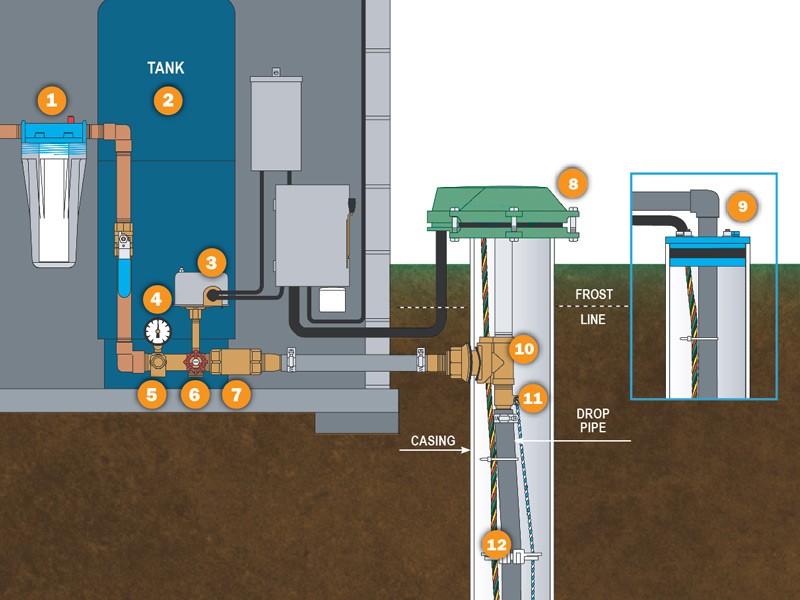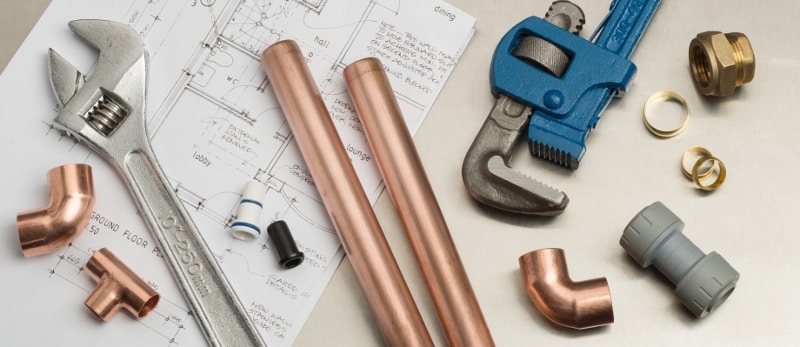The Core Parts of Your Home's Plumbing System
The Core Parts of Your Home's Plumbing System
Blog Article
The article on the next paragraphs pertaining to Understanding Your Home's Plumbing Anatomy is seriously fascinating. Don't miss out on it.

Understanding just how your home's pipes system works is important for each property owner. From supplying clean water for drinking, food preparation, and showering to safely removing wastewater, a properly maintained pipes system is essential for your family's wellness and comfort. In this comprehensive overview, we'll check out the intricate network that comprises your home's pipes and offer ideas on maintenance, upgrades, and managing common problems.
Intro
Your home's plumbing system is greater than just a network of pipes; it's an intricate system that ensures you have accessibility to clean water and efficient wastewater removal. Understanding its components and exactly how they interact can aid you prevent expensive repair services and make certain every little thing runs smoothly.
Basic Parts of a Plumbing System
Pipelines and Tubes
At the heart of your pipes system are the pipelines and tubing that carry water throughout your home. These can be made of different materials such as copper, PVC, or PEX, each with its benefits in regards to longevity and cost-effectiveness.
Components: Sinks, Toilets, Showers, and so on.
Fixtures like sinks, toilets, showers, and bathtubs are where water is used in your home. Understanding just how these components attach to the pipes system helps in diagnosing problems and planning upgrades.
Valves and Shut-off Points
Valves control the flow of water in your plumbing system. Shut-off valves are crucial during emergencies or when you require to make repairs, permitting you to separate parts of the system without interfering with water circulation to the whole home.
Water System
Key Water Line
The major water line links your home to the municipal water or a personal well. It's where water enters your home and is dispersed to different components.
Water Meter and Pressure Regulatory Authority
The water meter steps your water use, while a pressure regulator ensures that water moves at a risk-free stress throughout your home's pipes system, avoiding damage to pipelines and fixtures.
Cold Water vs. Warm water Lines
Comprehending the distinction in between cold water lines, which supply water straight from the primary, and hot water lines, which bring heated water from the water heater, helps in repairing and preparing for upgrades.
Drainage System
Drain Pipes and Traps
Drain pipelines bring wastewater away from sinks, showers, and commodes to the sewage system or septic system. Catches stop drain gases from entering your home and likewise trap debris that could cause obstructions.
Air flow Pipes
Air flow pipelines enable air into the drainage system, preventing suction that could slow drain and trigger traps to empty. Appropriate ventilation is necessary for keeping the honesty of your pipes system.
Significance of Appropriate Drain
Making sure appropriate drain stops back-ups and water damages. Routinely cleaning up drains pipes and keeping catches can prevent costly repair work and prolong the life of your pipes system.
Water Heater
Kinds Of Water Heaters
Water heaters can be tankless or conventional tank-style. Tankless heaters heat water on demand, while storage tanks store heated water for immediate use.
Upgrading Your Plumbing System
Reasons for Upgrading
Upgrading to water-efficient fixtures or replacing old pipes can boost water high quality, decrease water expenses, and boost the worth of your home.
Modern Plumbing Technologies and Their Benefits
Explore technologies like clever leakage detectors, water-saving bathrooms, and energy-efficient water heaters that can save cash and minimize environmental impact.
Price Considerations and ROI
Compute the in advance costs versus lasting financial savings when thinking about pipes upgrades. Lots of upgrades pay for themselves via minimized utility bills and less repair work.
How Water Heaters Attach to the Plumbing System
Understanding just how water heaters attach to both the cold water supply and hot water circulation lines assists in diagnosing concerns like inadequate hot water or leakages.
Maintenance Tips for Water Heaters
Regularly purging your water heater to get rid of sediment, examining the temperature setups, and evaluating for leakages can prolong its life-span and improve power efficiency.
Usual Plumbing Concerns
Leaks and Their Reasons
Leaks can take place due to maturing pipes, loosened fittings, or high water stress. Resolving leaks quickly protects against water damage and mold and mildew growth.
Obstructions and Blockages
Blockages in drains and bathrooms are usually triggered by purging non-flushable items or a build-up of grease and hair. Utilizing drainpipe displays and bearing in mind what goes down your drains pipes can prevent blockages.
Indicators of Plumbing Issues to Expect
Low tide pressure, sluggish drains pipes, foul odors, or unusually high water expenses are indicators of potential pipes troubles that need to be resolved quickly.
Pipes Upkeep Tips
Regular Evaluations and Checks
Set up yearly plumbing assessments to capture issues early. Search for indications of leakages, corrosion, or mineral accumulation in taps and showerheads.
Do It Yourself Upkeep Tasks
Basic tasks like cleansing tap aerators, looking for toilet leaks utilizing color tablet computers, or insulating exposed pipes in chilly environments can protect against major plumbing concerns.
When to Call a Specialist Plumbing Professional
Know when a plumbing issue needs expert know-how. Trying complex repairs without proper understanding can result in more damage and greater fixing costs.
Tips for Reducing Water Use
Straightforward habits like fixing leakages immediately, taking shorter showers, and running full loads of washing and meals can save water and lower your utility costs.
Eco-Friendly Pipes Options
Think about sustainable pipes materials like bamboo for floor covering, which is durable and environment-friendly, or recycled glass for countertops.
Emergency situation Readiness
Actions to Take Throughout a Pipes Emergency situation
Know where your shut-off shutoffs are located and exactly how to turn off the supply of water in case of a burst pipe or significant leakage.
Relevance of Having Emergency Contacts Helpful
Keep contact information for local plumbers or emergency situation solutions easily available for quick response throughout a pipes dilemma.
Environmental Influence and Conservation
Water-Saving Components and Appliances
Mounting low-flow faucets, showerheads, and commodes can considerably reduce water usage without compromising efficiency.
DIY Emergency Situation Fixes (When Suitable).
Temporary solutions like using air duct tape to patch a dripping pipe or putting a bucket under a leaking faucet can minimize damages until a specialist plumbing gets here.
Conclusion.
Recognizing the anatomy of your home's pipes system empowers you to preserve it effectively, conserving money and time on repair work. By adhering to regular maintenance regimens and staying notified regarding modern-day pipes innovations, you can guarantee your plumbing system operates successfully for years to find.
HOW YOUR PLUMBING SYSTEM WORKS
Which Pipes Do What?
Blue lines = fresh water supply entering the building Red lines = hot water supply entering the building Grey lines = pipes carrying waste away from the building and venting pipes carrying gases away from the building (through the roof) YOUR MAIN PLUMBING SYSTEMS
There are two main plumbing systems that support your home s basic plumbing needs one that brings clean water into your home, and one that sends dirty water away from your home. Connected to the toilet, bath, shower, and other faucets in your home, these two systems keep your water flowing in the right directions.
ACCESSING FRESH WATER
Fresh and clean water is brought into your home through the main water supply line . Filtered through one pipe, this water is pressured to flow into the various fixtures in your home at any given time.
This water can be sourced from a well located on your property, a pond or river (mostly cottages), or, as in most cases, from the city s municipal water treatment centre. However, it is important to note that water that is untreated, such as the water siphoned from ponds or rivers, may not be safe to drink. Personal water supplies always need to be treated for hardness and contaminants before consumed.
MUNICIPAL WATER SUPPLIES
Improve taste and odour Remove sediment Eliminate hardness Reduce chlorine COLD WATER SUPPLY VS. HOT WATER SUPPLY
Cold water flows into your home or building through the service line, which then distributes hot or cold water to your fixtures. This line is most commonly run through a central column that runs floor to floor. Hot water runs in short and straight pipes as the longer the pipeline, the more heat that will be lost in the transfer. Having shorter pipes also allows residents to access hot water more quickly.
WASTE WATER SYSTEM
Your wastewater system is divided into two parts pipes that send wastewater away from your home and venting pipes that send sewer gas away from your home. Sewage water travels through pipes that flush the water and waste towards local sewers that are operated and managed by your city or town. Most sewer systems rely on gravity to move the wastewater to where it needs to go.
The further away from your toilet or sink, the larger wastewater pipes become. This allows for waste to be disposed of from various parts of your home or business at once without pipe blockages. The angle and flow of these pipes are also essential for keeping your waste pipes clear of build up.
https://harrisplumbing.ca/how-your-home-plumbing-system-works/

We were brought to that write-up about Plumbing Installation 101: All You Need to Know through an acquaintance on our other site. Liked our piece of writing? Please share it. Let another person locate it. I am grateful for your time. Kindly check our site back soon.
Automated Marketing Report this page